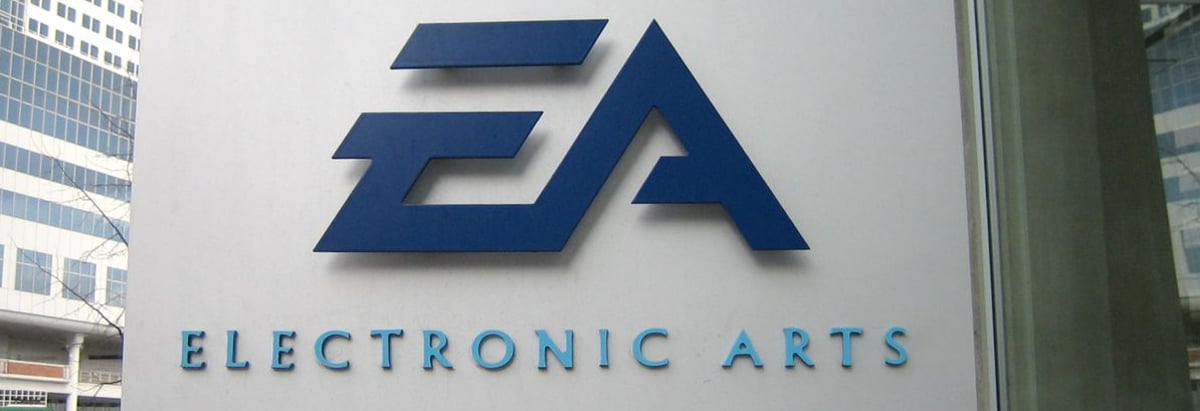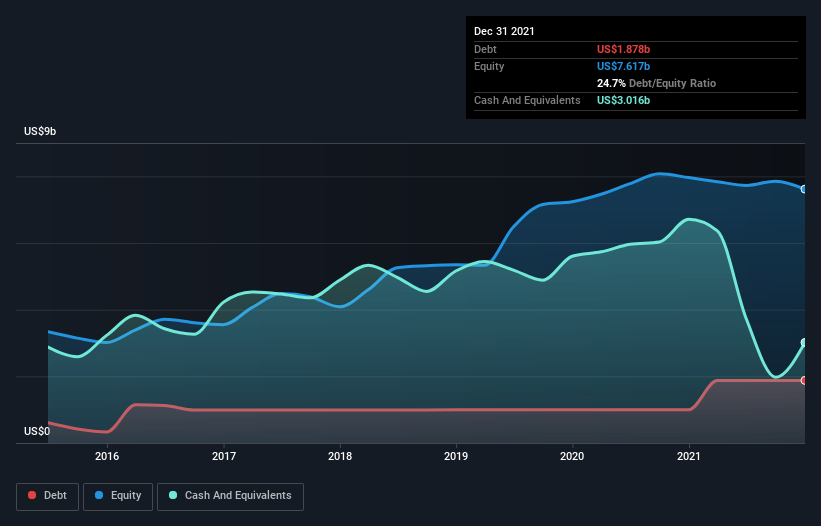- United States
- /
- Entertainment
- /
- NasdaqGS:EA
Electronic Arts (NASDAQ:EA) Has A Pretty Healthy Balance Sheet

Legendary fund manager Li Lu (who Charlie Munger backed) once said, 'The biggest investment risk is not the volatility of prices, but whether you will suffer a permanent loss of capital.' So it seems the smart money knows that debt - which is usually involved in bankruptcies - is a very important factor, when you assess how risky a company is. Importantly, Electronic Arts Inc. (NASDAQ:EA) does carry debt. But should shareholders be worried about its use of debt?
What Risk Does Debt Bring?
Debt assists a business until the business has trouble paying it off, either with new capital or with free cash flow. In the worst case scenario, a company can go bankrupt if it cannot pay its creditors. However, a more common (but still painful) scenario is that it has to raise new equity capital at a low price, thus permanently diluting shareholders. Having said that, the most common situation is where a company manages its debt reasonably well - and to its own advantage. The first step when considering a company's debt levels is to consider its cash and debt together.
Check out our latest analysis for Electronic Arts
How Much Debt Does Electronic Arts Carry?
The image below, which you can click on for greater detail, shows that at December 2021 Electronic Arts had debt of US$1.88b, up from US$997.0m in one year. But it also has US$3.02b in cash to offset that, meaning it has US$1.14b net cash.

How Healthy Is Electronic Arts' Balance Sheet?
According to the last reported balance sheet, Electronic Arts had liabilities of US$3.63b due within 12 months, and liabilities of US$2.68b due beyond 12 months. Offsetting these obligations, it had cash of US$3.02b as well as receivables valued at US$965.0m due within 12 months. So its liabilities outweigh the sum of its cash and (near-term) receivables by US$2.33b.
Since publicly traded Electronic Arts shares are worth a very impressive total of US$32.4b, it seems unlikely that this level of liabilities would be a major threat. But there are sufficient liabilities that we would certainly recommend shareholders continue to monitor the balance sheet, going forward. Despite its noteworthy liabilities, Electronic Arts boasts net cash, so it's fair to say it does not have a heavy debt load!
The modesty of its debt load may become crucial for Electronic Arts if management cannot prevent a repeat of the 22% cut to EBIT over the last year. Falling earnings (if the trend continues) could eventually make even modest debt quite risky. The balance sheet is clearly the area to focus on when you are analysing debt. But ultimately the future profitability of the business will decide if Electronic Arts can strengthen its balance sheet over time. So if you're focused on the future you can check out this free report showing analyst profit forecasts.
Finally, a business needs free cash flow to pay off debt; accounting profits just don't cut it. While Electronic Arts has net cash on its balance sheet, it's still worth taking a look at its ability to convert earnings before interest and tax (EBIT) to free cash flow, to help us understand how quickly it is building (or eroding) that cash balance. Over the last three years, Electronic Arts actually produced more free cash flow than EBIT. That sort of strong cash conversion gets us as excited as the crowd when the beat drops at a Daft Punk concert.
Summing up
We could understand if investors are concerned about Electronic Arts's liabilities, but we can be reassured by the fact it has has net cash of US$1.14b. And it impressed us with free cash flow of US$1.7b, being 152% of its EBIT. So we don't have any problem with Electronic Arts's use of debt. There's no doubt that we learn most about debt from the balance sheet. But ultimately, every company can contain risks that exist outside of the balance sheet. Case in point: We've spotted 1 warning sign for Electronic Arts you should be aware of.
Of course, if you're the type of investor who prefers buying stocks without the burden of debt, then don't hesitate to discover our exclusive list of net cash growth stocks, today.
Valuation is complex, but we're here to simplify it.
Discover if Electronic Arts might be undervalued or overvalued with our detailed analysis, featuring fair value estimates, potential risks, dividends, insider trades, and its financial condition.
Access Free AnalysisHave feedback on this article? Concerned about the content? Get in touch with us directly. Alternatively, email editorial-team (at) simplywallst.com.
This article by Simply Wall St is general in nature. We provide commentary based on historical data and analyst forecasts only using an unbiased methodology and our articles are not intended to be financial advice. It does not constitute a recommendation to buy or sell any stock, and does not take account of your objectives, or your financial situation. We aim to bring you long-term focused analysis driven by fundamental data. Note that our analysis may not factor in the latest price-sensitive company announcements or qualitative material. Simply Wall St has no position in any stocks mentioned.
About NasdaqGS:EA
Electronic Arts
Develops, markets, publishes, and delivers games, content, and services for game consoles, PCs, mobile phones, and tablets worldwide.
Adequate balance sheet with limited growth.
Similar Companies
Market Insights
Community Narratives



